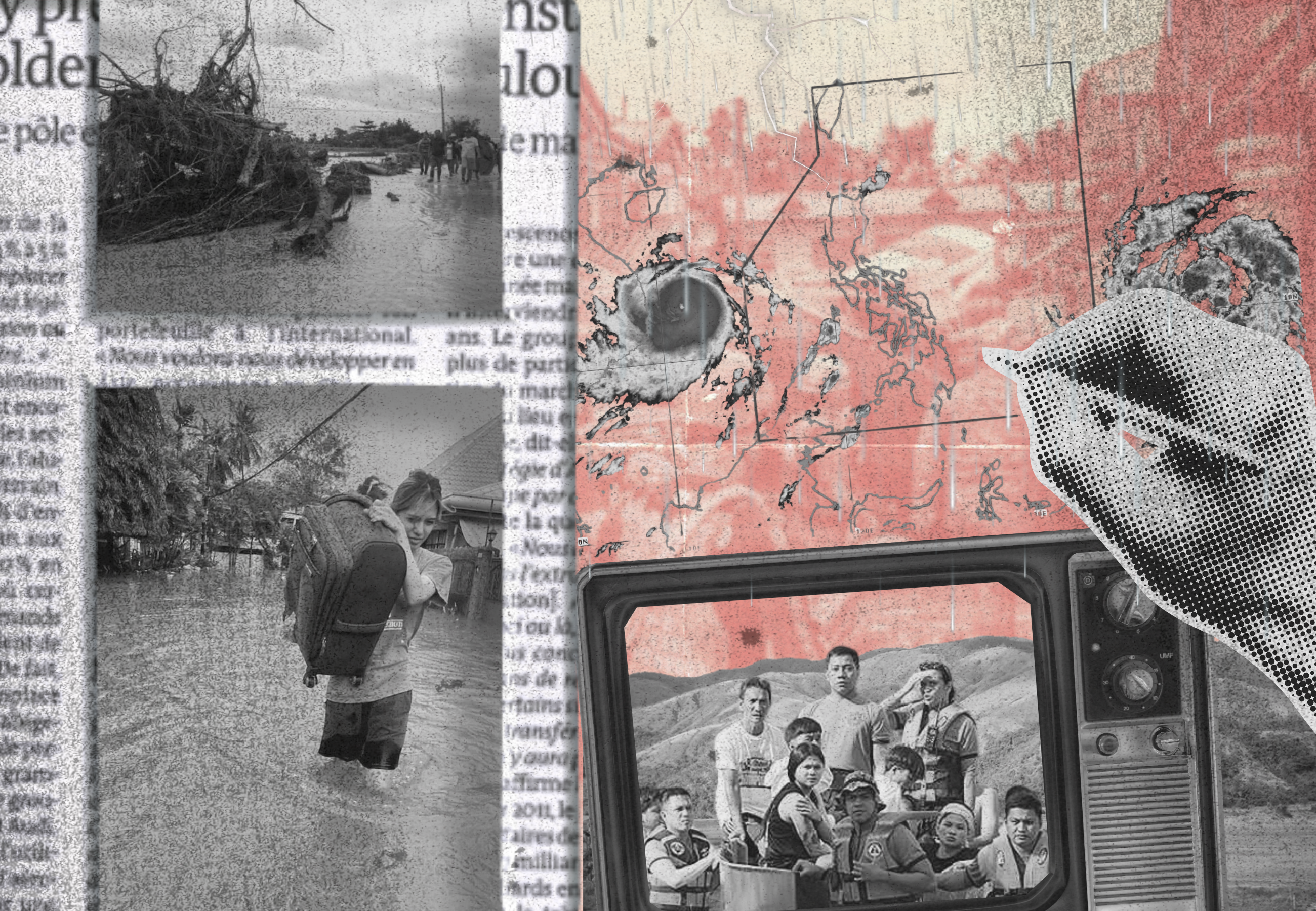Typhoons in November: Disaster reporting in a time of climate crisis

TWO SUPER typhoons demonstrated the impact of the climate crisis as a severe tropical storm “Tino” and typhoon “Uwan” pummeled extensive areas in the Visayas and Mindanao.
Tino, described as one of the deadliest in the Philippines this year, made several landfalls on November 2, hitting the provinces of Silago, Southern Leyte, Cebu, Negros, and parts of Northern Mindanao. It brought heavy rains and massive flooding, leaving a record of 269 deaths and 523 injured as of this writing.
On November 9, typhoon Uwan devastated northern parts of Luzon. The most affected provinces included Aurora, Isabela, Camarines Norte, Camarines Sur, Albay, Catanduanes, and Nueva Vizcaya. Recorded fatalities reached 27 at press time as millions of families were forced to evacuate.
News highlighted the prominence of both typhoons, recording death tolls, real-time updates, including immediate response efforts of both local and national governments. Media sustained continuing coverage of the two typhoons, updating death toll and other destruction in different parts of the country from November 2 to 12.
On TV, major news outlets, including ABS-CBN News and News5, produced special formats to report Typhoon Tino on November 4. GMA’s 24 Oras aired several special coverage reports on November 3, November 5, and November 6 — focusing dedicated segments to highlight the effects of the typhoon on different communities. GMA’s nighttime newscast State of the Nation, also conducted its separate special coverage of Typhoon Tino on November 4.
ABS-CBN’s Visayan-language documentary collected firsthand experience of the most affected communities in Negros province. Produced and presented by regional news group Digicast Negros, a project initiated by journalists formerly employed by ABS-CBN in Bacolod.
Major networks likewise mounted special TV coverage of Uwan. On November 9, ABS-CBN News’ TV Patrol Express, News 5 both aired focused reports on the typhoon’s movement; the former led by resident meteorologist, Ariel Roxas. On November 10, TV Patrol Express followed up with updates on the typhoon’s trajectory and its impact on affected areas. GMA News focused on the aftermath of both Tino and Uwan in its special coverage on November 12.
TV programs offered real-time updates and analyses, tracking the typhoon’s movement through the country.
Scientific coverage
GMA News Online and Manila Bulletin called attention to the hefty volume of rainfall experienced in Visayas, citing the Philippine Atmospheric, Geophysical and Astronomical Services Administration’s (PAG-ASA), informative social media post. It explained the unusually heavy rainfall, pointing out how this is not commonly experienced in the Visayas region.
Meanwhile, Rappler released a report on November 8 that focused on environmental groups in Negros Occidental who said that Supertyphoon Tino exposed the poor state of their ‘green giants’ — referring to areas that act as natural shields against flooding in the province. Green Alert Network (GAN) cited the impact of recent disasters, revealed the environmental neglect wrought by developments in the region.
Reports on Typhoon Uwan referred to the longstanding belief that Sierra Madre in Luzon acts as a barrier that tempers the strength of typhoons in the region. Reports highlighted how Uwan weakened as it crossed through Luzon.
For decades, reports have labeled Sierra Madre as the “protector” of Luzon, as the mountain range serves to weaken typhoons as these make landfall.
Between November 10 to 12, reports of ABS-CBN News Online, GMA News Online, Philstar.com, and Rappler showed how the mountain range modified the impact of the typhoon as it crossed Luzon.
The reports cited a study by Atmospheric Scientist Gerry Bagtasa and University of the Philippines Diliman (UPD) Professor Bernard Alan Racoma, which explained how the Sierra Madre offers protection, particularly for the Cagayan Valley region; but that it does little to weaken typhoons around Luzon, especially in Metro Manila. Both Bagtasa and Racoma warned against the threat of deforestation, calling for the protection of the Sierra Madre and its rich biodiversity.
Rappler stands out for the significant scientific output in its reporting of Uwan. On November 11, it offered ‘fast facts’ as background, discussing the science to explain the intensity and the risks posed by Uwan, while explaining the factors that weakened its force.
Rappler also provided a separate explainer on the formation of tropical cyclones, helping readers understand how storms develop as part of the larger dynamics of climactic phenomena.
Storms and typhoons are part of the Philippine national experience. Media helps to provide more science-based coverage of these events. Updated knowledge and understanding of typhoons can help the public understand the impact and the dangers that arise from their landfall.
Coverage should also discuss the role of environmental activists who call for safeguards to protect Nature and to nurture its capacity to renew and recover when climactic crises strike. Journalists should be ready to report on developments that endanger communities and human life. It should be part of regular coverage, even when there are no signals to warn against inclement weather.
Leave a Reply